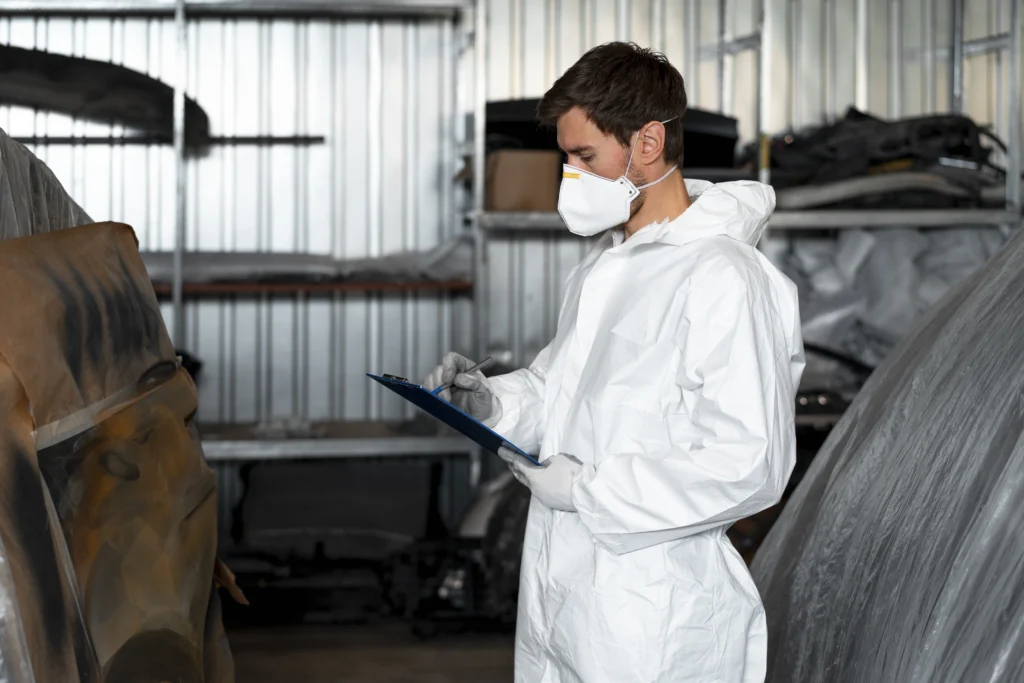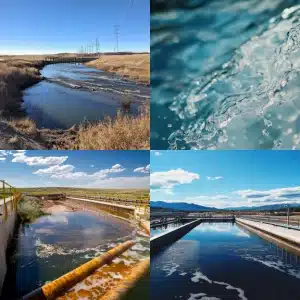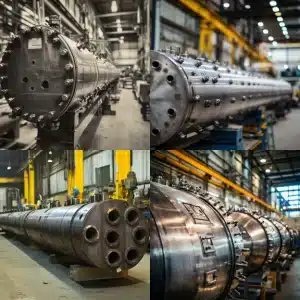
Corrosion failure analysis helps identify the root causes of metal deterioration by combining visual inspections, lab tests, and design evaluations to prevent future damage. Implementing these steps, along with controlled prefabrication and quality measures, extends equipment lifespan and reduces downtime.
Why How to Perform Corrosion Failure Analysis Matters
Corrosion is a leading culprit behind unexpected downtime and costly repairs. If you want to increase the lifespan of your equipment and protect your bottom line, learning how to perform corrosion failure analysis is key. You will gather evidence of what went wrong, pinpoint the root causes, and form a practical plan to prevent future damage. Whether you are dealing with pressure vessels, piping systems, or other critical components, a thorough approach can dramatically reduce risk and keep your process running efficiently.
In this guide, you will explore fundamental steps for examining corrosion damage, from visually inspecting the affected areas to performing in-depth laboratory tests. Along the way, you will also see how a strong partner, such as Red River LLC (an ASME-certified and NBBI R Stamp-accredited manufacturer), can support your efforts with advanced prefabrication, welding, and assembly capabilities.
Recognize the Signs of Corrosion
Before you start a formal analysis, it helps to identify potential red flags. Corrosion shows itself in different forms, so you want to look for clear surface changes and environmental risk factors, especially when performing Pressure vessel failure analysis.
Look for Visible Clues
Signs of corrosion can include rust, discoloration, pitting, cracking, or even a flaky buildup on metal surfaces. You might notice the following during Corrosion analysis steps:
- Reddish or brownish oxide stains on steel.
- Flaked or bubbly paint indicating moisture under a protective coating.
- White deposits (like calcium buildup) on certain alloys or stainless steels.
- Localized pits and cracks that suggest aggressive chemical exposure.
If you are working with components under internal pressure, you may also want to explore pressure vessel failure analysis to confirm whether fatigue, corrosion, or mechanical stress contributed to the damage.
Understand Risky Environments
Environmental triggers play a pivotal role in corrosion failure. Saline air, chemicals in industrial settings, extreme temperatures, and even water quality can accelerate corrosive reactions. During Corrosion analysis steps, you should ask:
- Is the equipment exposed to salt-laden air (e.g., coastal regions)?
- Are there aggressive chemicals, like acids, nearby?
- Is the metal subjected to high heat or wide temperature swings?
If the answers point toward hazardous conditions, your corrosion failure analysis should specifically address these external factors. In some cases, you may discover that a protective coating or special alloy is needed to resist the environmental load.
Follow a Step-by-step Approach
When you learn how to perform corrosion failure analysis thoroughly, you have a clearer path to preventing further issues. Below is a straightforward, five-step process you can adapt to almost any industrial setting.
Gather Background and Operational Data
Start by documenting the part’s service history, design parameters, and environmental conditions. For example, during Lab testing for corrosion:
- Collect engineering drawings or specifications.
- Find out how long the equipment has been in use and any changes in operating conditions.
- Note the presence of corrosive chemicals or extreme temperatures.
This basic overview helps you narrow down possible causes. At Red River LLC, the team emphasizes full material traceability and thorough understanding of operational pressures before diving into advanced testing.
Perform a Preliminary Visual Inspection
A well-planned visual check goes beyond a simple glance during Lab testing for corrosion:
- Clean the surface gently to see where corrosion has taken hold.
- Photograph each affected area with proper labeling.
- Note patterns like uniform rust or localized pitting, which may hint at a specific corrosion mechanism.
If you find cracks or thick pitting, consider deeper assessments or relevant sub-analyses, such as material failure analysis.
Conduct Microscopic and Laboratory Tests
Once you have visual clues, it is time to dig deeper. Depending on your resources, you may:
- Use optical microscopy to examine surface details, pit shapes, or crack tips.
- Employ scanning electron microscopy (SEM) for higher magnification and detailed imaging.
- Perform elemental analysis, such as energy-dispersive X-ray spectroscopy (EDS), to identify chemical signatures.
These lab tests help you confirm if the failure was due to a single factor or a combination of chemical and mechanical stresses. Red River LLC, which has a background in custom pressure vessel manufacturing, highlights that testing can reveal whether the chosen alloy or weld filler material matched the intended operating environment.
Review Material and Design Alignment
If lab tests show that the alloy or protective coatings corroded faster than expected, you should revisit the design and material selection. Recognizing these gaps helps prevent future trouble.
Compile Recommendations and Confirm Fixes
The final step involves summarizing your findings and advising on solutions. Provide a concise analysis that explains:
- What type of corrosion you identified (e.g., pitting, galvanic, stress corrosion cracking).
- Which environmental or design factors created the corrosion-friendly conditions.
- Recommended fixes, such as material changes, protective coatings, or operational changes.
Once the fixes are in place, confirm effectiveness with advanced quality control processes.
Investigate Advanced Testing Methods
In some scenarios, basic microscopy is not enough. Corrosion can be influenced by microscopic defects that only show up under higher magnification or specialized techniques. You may want to explore:
- X-ray diffraction (XRD) to identify corrosion products.
- Electrochemical impedance spectroscopy (EIS) to measure corrosion rates and evaluate protective coatings.
- Metallurgical analyses that check for grain boundary attacks, often necessary for stainless steels or nickel-based alloys.
Advanced analytical tools help confirm root causes and prevent secondary damage.
Combine Findings with Prefabrication Insights
Prefabrication reduces corrosion risks by shortening exposure to harsh conditions. Red River LLC’s prefabrication approach:
- Lowers on-site exposure hours (and lowers insurance rates, too).
- Simplifies material handling and reduces the chance of accidental damage.
- Improves consistency of welds and coatings.
Controlled off-site fabrication minimizes environmental triggers and corrosion types.
How to Perform Corrosion Failure Analysis Wisely
If corrosion is harming your operations, you now have a proven roadmap for identifying, analyzing, and addressing any damage. You learned the importance of gathering background data, inspecting surfaces carefully, and using laboratory tools to pinpoint corrosion mechanisms. You saw how revisiting design choices, such as metal selection or protective coatings, can resolve the root cause. Finally, you discovered that prioritizing a controlled manufacturing environment, like the approach Red River LLC takes, diminishes the probability of corrosion in the first place.
When you bring all these elements together, you can confidently protect your equipment, reduce downtime, and extend the life of your pressure vessels or other critical systems. You are not just fixing a single issue you are taking proactive steps toward a safer, more reliable operation.
Protect Your Equipment with Corrosion Analysis
Don’t wait until damage escalates. Partner with Red River LLC to apply expert insights on how to perform corrosion failure analysis and secure the long-term strength of your assets. Request a Quote today.
Frequently Asked Questions
1. What is corrosion failure analysis?
Corrosion failure analysis is the process of investigating metal deterioration to determine the causes, mechanisms, and extent of corrosion in materials or structures.
2. Why is corrosion failure analysis important?
Corrosion failure analysis is important because it helps prevent unexpected equipment breakdowns, reduces maintenance costs, and ensures the safety and longevity of structures.
3. How do I know if my pressure vessel corrosion is severe?
Severity often depends on location, depth of pitting, and operational stress. If you suspect a compromised vessel, you could refer to what causes pressure vessel failure and consult an ASME-certified professional.
4. Can coating alone solve corrosion problems?
Coatings help but might not fix underlying design flaws, poor material selection, or severe environmental conditions. Combining robust coatings with proper alloys usually yields better results.
5. Why is chemical analysis so important in corrosion failure?
Chemical analysis reveals which elements or compounds accelerated corrosion. This detailed information points you to the best countermeasure, whether that is a protective alloy or a process tweak.
6. Where do I find more resources on analyzing material breakdown?
You can explore what is corrosion failure analysis or material failure analysis for in-depth definitions and additional case studies related to general material breakdown processes.
7. Should I always involve a third-party lab?
External labs often have advanced testing machinery and specialized expertise. If you lack in-house capabilities, or if the failure has a significant cost or safety impact, a third-party lab can provide an unbiased, thorough analysis.
Key Takeaway
- Start with a background review so you understand the environment and operating conditions.
- Inspect visually for corrosion patterns, then choose microscopic or chemical tests to confirm your suspicions.
- Reevaluate design and material alignment, particularly if a system must operate in aggressive environments.
- Write a clear report with recommended prevention measures and confirm their effectiveness.
- Embrace prefabrication strategies, like those offered by Red River LLC, to reduce corrosion risks from the beginning.




